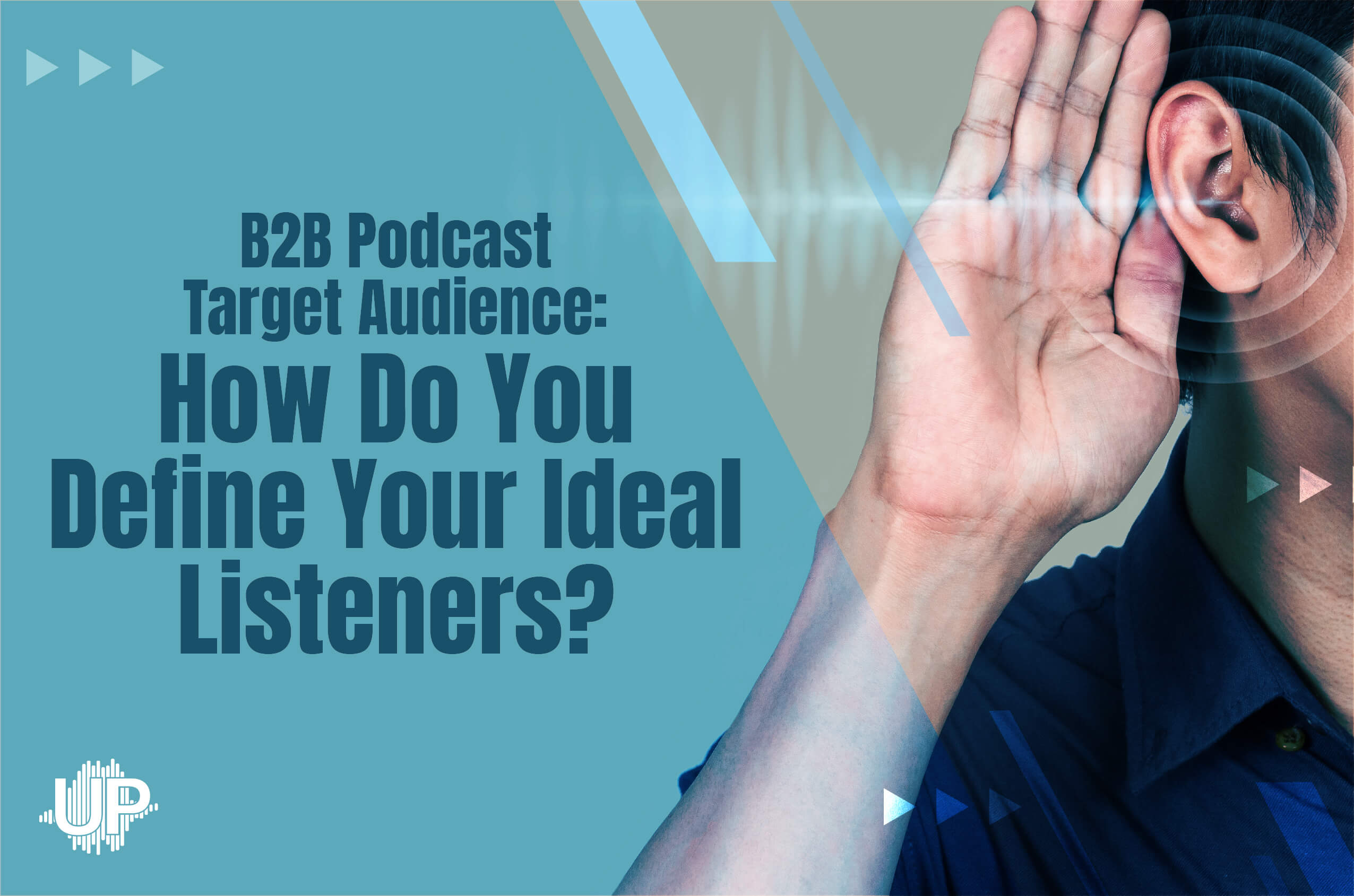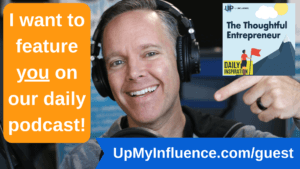
Identifying your ideal B2B podcast target audience is crucial for crafting content that resonates. Learn the key steps to define the listeners who will most benefit from your expertise, ensuring your podcast attracts and retains a dedicated following.
Dive into strategies for aligning your content with the needs and interests of professionals in your sector, setting the stage for a podcast that becomes an indispensable resource in your industry.
Why Defining Your Podcast Audience Matters?
Defining your B2B podcast target audience is essential because it directly influences the content's relevance and appeal. When you know who you're talking to, you can craft episodes that resonate deeply with their interests, challenges, and aspirations. This targeted approach engages your existing podcast audience and attracts new listeners who find value in your niche.
Moreover, understanding your podcast audience shapes your marketing efforts. You can tailor your promotional strategies, use the most effective platforms, and speak in a language your audience understands and appreciates. This precision in marketing enhances your podcast's visibility and appeal.
Knowing your audience is invaluable in building lasting relationships, a cornerstone of your business. It allows you to connect with listeners on a more personal level. These connections are not just passive listeners; they can evolve into clients, partners, or collaborators, creating a robust network for your business.
How to Define Your Ideal Listener for B2B Podcast?
Defining your ideal listener for a B2B podcast is a strategic step that sets the foundation for success. The goal is to create a podcast that informs, engages, and resonates deeply with a specific professional audience, turning listeners into potential business partners or clients.
Conducting Audience Research for your B2B podcast target audience
Audience research is fundamental in understanding and engaging effectively with your podcast listeners. This research informs content creation and guides marketing strategies, helping you connect more deeply with your audience and grow your listener base.
By focusing on audience research, you ensure your podcast resonates with the right people, enhancing its impact and relevance in your niche.
- Surveys and Questionnaires: Use these to gather data from your current listeners about their demographics, preferences, and feedback.
- Social Media Analytics: Analyze your followers' interactions and demographics on LinkedIn, Twitter, and Facebook platforms.
- Listener Feedback: Collect and review your audience's comments, emails, and messages.
- Competitor Analysis: Study other B2B podcasts and their audiences to identify trends and gaps.
- Industry Forums and Groups: Engage in online forums and groups related to your podcast's niche to understand the discussions and needs of potential listeners.
- Interviews and Focus Groups: Conduct in-depth conversations with a sample of your target audience for qualitative insights.
- Web Analytics: Use tools like Google Analytics to track and analyze your podcast website's visitor data.
- Monitor Trends: Stay updated with industry trends and news to anticipate audience interest and need changes.
Creating Buyer Personas
Creating buyer personas is a strategic approach to understanding and categorizing your target audience. By defining these personas, you gain insights into customer needs, behaviors, and decision-making processes, enabling them to tailor their marketing strategies, product development, and customer service to meet the specific needs of different audience segments.
- Gathering Data: Collect information from customer interactions, surveys, social media analytics, and sales reports.
- Identifying Patterns: Look for common customer characteristics, such as demographics, behavior, and preferences.
- Understanding Needs and Goals: Determine what drives your customers, their goals, challenges, and pain points.
- Segmentation: Divide your audience into segments based on similar traits or needs.
- Creating Detailed Personas: Develop detailed profiles for each segment, giving them names and personalities to represent typical customers.
- Applying Personas: These personas guide marketing strategies, product development, and customer service approaches.
- Reviewing Regularly: Update personas as your market and customer base evolve.
Identifying Pain Points and Challenges:
Identifying pain points and challenges of your podcast audience is a powerful tool for content creation. For example, if your B2B audience needs help with lead generation, create episodes featuring experts in lead generation and marketing strategies. This addresses a key challenge: making your content highly relevant and engaging.
Another example is focusing on the latest industry trends or technological advancements. If your audience is grappling with keeping up-to-date with technology, episodes that demystify new tech or discuss its impact can be incredibly valuable. This informs and positions your podcast as a go-to resource for current industry knowledge.
Lastly, addressing common operational challenges, like team management or business scaling, can also enhance engagement. Episodes offering practical advice, case studies, or discussions with successful business leaders can provide your listeners with actionable insights, further cementing the value of your podcast in their professional lives.
Adapting to Evolving Audiences
Adapting to evolving audiences is essential for maintaining the relevance and impact of your B2B podcast. As listener preferences, industry trends, and market dynamics change, your podcast must evolve to align with your audience's current needs and interests.
This ongoing adaptation ensures your content remains engaging, valuable, and influential for your target listener base.
- Regular Audience Analysis: Continuously analyze listener data for shifts in preferences, demographics, or behaviors.
- Feedback Collection: Gather and review listener feedback through surveys, social media, and direct communication.
- Content Flexibility: Be willing to adjust topics, formats, or presentation styles to align with changing audience interests.
- Stay Informed on Industry Trends: Keep abreast of changes and developments in your industry to reflect these in your content.
- Engage with Community: Foster a community around your podcast where listeners can interact and share insights, influencing your content direction.
- Incorporate New Technologies: Embrace new platforms or technologies your audience is moving towards.
- Evaluate and Pivot: Regularly assess your podcast’s performance and be ready to pivot strategies if audience shifts warrant it.
Using Your Ideal Listener Profile to Find New Audiences
Leveraging your ideal B2B podcast audience profile is a strategic way to find and engage new audiences for your podcast. By understanding the characteristics and interests of your current listeners, you can effectively reach out to similar groups who are likely to find value in your content.
This targeted approach expands your listener base and ensures your new audience aligns with your podcast's goals and themes.
- Leveraging Similar Interests: Identify platforms and communities where individuals with similar interests to your ideal listener congregate.
- Partnerships: Collaborate with influencers, industry experts, or businesses already engaging with your target audience.
- Content Syndication: Share your podcast on platforms frequented by your B2B target audience.
- Tailored Marketing: Create marketing campaigns that speak directly to the interests and needs of your ideal listener.
- Social Media Targeting: Use social media ads with specific targeting based on the characteristics of your ideal listener.
- SEO Strategies: Optimize your podcast's online presence for search terms and topics relevant to your ideal listener.
- Networking Events: Attend or host events where your ideal listeners will likely be present.
- Feedback and Referrals: Encourage current listeners to provide feedback and refer others who fit your ideal listener profile.
Ask People What They Want to Hear
Asking your B2B podcast audience what they want to hear is a powerful way to refine your audience and enhance your podcast's relevance. Listener feedback provides direct insights into their preferences, helping you effectively tailor your content.
This approach not only deepens listeners engagement but also aids in attracting new listeners who value content shaped by audience input. Incorporating this feedback into your strategy ensures your podcast remains dynamic, relevant, and closely aligned with listener interests.
- Conduct Surveys: Regularly survey your B2B podcast audience about their interests and preferences.
- Social Media Engagement: Use social media platforms to ask for topic suggestions and feedback.
- Review Comments: Monitor comments on your podcast platform and social media for insights.
- Email Inquiries: Send direct emails asking for listener input on future topics or improvements.
- Analyze Listener Behavior: Use analytics to understand popular episodes and topics.
- Incorporate Feedback: Actively adapt your content based on feedback, showing your podcast audience that their input is valued and acted upon.
- Follow-up: After incorporating suggestions, follow up with your audience to gauge their response and refine your approach.
Bottom Line
Defining your ideal B2B podcast audience is a strategic process that hinges on understanding industry specifics, listener roles, and their unique challenges and interests.
You can fine-tune your target listener profile by analyzing competitor audiences, leveraging existing listener data, and engaging with your audience.
Remember, this is not a one-time task but an ongoing process of adaptation and refinement, ensuring your podcast continually resonates with and appeals to the most relevant audience, driving growth and engagement for your business.
Listen to the Thoughtful Entrepreneur
More Resources from UpMyInfluence:
How to Be An Exceptional Podcast Host
How to Be an Exceptional Podcast Guest
The Best Podcasting Equipment on a Budget


